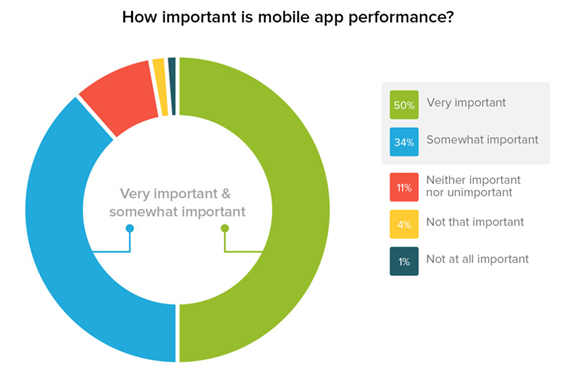If it’s not clear by now it should be: the world has gone mobile.
Mobile usage continues to surge as more and more individuals around the world gain access to smartphones. More Internet searches are conducted over mobile devices than on traditional computers now. Mobile users are reading emails, watching videos and looking up local businesses now than ever before.
This is isn’t just a trend now. It’s a way of life.
As a business, it’s critical for you to fully implement mobile marketing in your advertising outreach. Failure to do so at this point instantly removes you from realistically competing with other service providers, both locally and globally.
But how has the world of mobile changed in 2018? With new applications and designs coming out on a seemingly daily basis there is always something new and exciting to take advantage of.
The better you are at realizing these updates the easier it becomes at connecting with a key demographic, generating leads and boosting sales.
For 2018, here are 8 mobile trends that are completely dominating.
Artificial Intelligence
The world of AI has improved by leaps and bounds in just a few short years. In fact, for many, it has happened right under their noses.
AI isn’t just robots learning to manipulate the world around them. It also comes in the form of a digital assistant. Such as Alexa and Google Assistant (with Apple’s Siri struggling to keep up).
These services adapt to the user, learn what a user is interested in and provide assistance accordingly.
These AI devices can control everything from home electronics to vehicles, which is done through general voice commands. With the continued expanse of this technology, your business needs to no longer focus on just desktop and mobile phone marketing but also voice command AI.
According to WordStream (2018), by 2019 nearly 40% of all Millennials will be using a voice-enabled digital assistant, while both Gen X and Baby Boomer numbers continue to grow as well.
(Source)
2) Augmented Reality
AR, AI, and VR are often confused for one another. While sharing some similarities, the three are different from one another.
AI is able to learn and adapt. VR, or virtual reality, places you in a completely fabricated world. What you see around you is not actually there. AR, or augmented reality, takes what is around here and adds to it (it “augments” it).
A number of applications have made this popular. Pokemon Go become one of the most popular applications of all time with its AR setup. The application allowed you to point the camera of your phone at any given object. Then, on the screen, the application would add a cartoon character to the scenery.
Snapchat has become one of the biggest users of AR. This social media platform allows designers and businesses to produce AR filters. Taco Bell, for example, created a filter that would turn a user’s face into a taco. Gatorade created one that would shower a person with Gatorade.
The creation of these AR filters is valuable in that when one user showcases it, others have the ability to download and use the filter. This acts as trending, mobile marketing.
Most AR relies on mobile phone applications. According to ValueCoders (2018), well over 90% of AR usage takes place on mobile devices with the total number of users looking to grow substantially over the next several years.
(Source)
3) GEO Tracking
GEO tracking, also known as location tracking, allows your business to connect with customers based on where they are located. This gives them real-time updates, advertisements, and special offers simply for coming in within a set range of your storefront.
There are a few ways to go about doing this. It is possible to send out a text message to an individual who has agreed to receive text messages. The other option is to create a mobile application and send out updates based on a customer’s GPS location.
Businesses continue to roll out these kinds of GEO based applications. Uber and Lyft are two popular ride-share applications that provide you with this kind of information. However, other businesses do the same. From offering BOGO offers when traveling near a restaurant to discounts when walking past storefronts, all of this helps bring customers into your business in real time.
Location tracking continues to be more and more popular in mobile development. According to Daze Info, 70% of all applications available on mobile devices now feature some sort of location tracking feature.

(Source)
4) Application Revenue
If your business doesn’t yet have a mobile application you’re missing out.
Between 2016 and 2017, revenue generated from mobile applications jumped 35 percent, from $43.6 billion to $58.6 billion just in the United States, and this is a number that will continue to grow. Worldwide app revenue hit $88.3 billion in 2016 and by 2020, this number is expected to hit $190 billion (according to Statista, 2018).
Revenue growth comes in several forms. From increasing your total sales to the money brought on via advertisements placed on the application, now is the time to stop putting off that mobile app development and to take full advantage of its potential.
(Source)
5) Biometrics
Your mobile phone no longer relies on a simple swipe or keyed in password to unlock. Now, with every product release, devices are relying more and more on biometric features.
What are biometrics?
Fingerprint, voice and facial recognition are a few examples of biometrics.
While these features are beneficial for unlocking mobile devices it is also helpful when it comes to safeguarding an application. If your mobile application deals with a customer’s financial information (such as a banking app or a direct-sales application) you may choose to integrate a biometric option.
According to Statista (2017), 60 percent of all new smartphones featured a biometric function in 2017, with 55% of wearable devices and 40 percent of tablets in the same time period. By 2020, every smartphone, wearable, and tablet released will feature biometrics.
(Source)
Offering a biometric feature into your application not only protects user data but it improves their peace of mind knowing even if the phone is misplaced or lost their saved information is safe.
6) Consider Hybrid Application
If you’ve ever looked at implementing a mobile application but don’t want to pay to have it designed for both Apple and Google-based devices, you understand the cost associated with app creation. While the Apple iPhone is the most popular phone in the United States, Android is by far the most popular mobile operating system. So by selecting one over the other, you’re going to alienate a portion of the community, yet you may not have the available finances to code two different apps.
That is where hybrid application development comes in.
This kind of an app uses one code base that can be used on multiple platforms. It is cheaper and offers a faster initial speed for all platforms. While there are still benefits of individual app creation (such as improved user interface and a better end experience) this is an option to consider.
If you have the time and resources, it’s recommended to release individual applications. According to YMedia Labs (2018), 84 percent of consumers polled said mobile app performance is at the very least somewhat important.

(Source)
If you can afford to design both individuals, do so. However, if your budget is limited and you want to get something out there instead of nothing, a hybrid application is one option.
7) Wearable Technology
Wearable technology hasn’t completely taken the world by storm yet, but it is slowly growing in popularity.
Both Apple and Samsung released watches, but due to the initial lack of supported applications and entry price, few invested in the technology.
Now, after several generations of watches, the hardware has become less expensive and third-party designers have jumped onto the bandwagon.
In fact, according to Smart Insights (2017), there will be 7.5 billion units of wearable technology sold by 2026. With the ability to integrated wearable applications and GEO tracking notifications, now is the time to get in on the ground floor of this growing technology.
(Source)
There has been an explosive growth in wearable technology trends in the last several years. Here’s a great post from Digiswitch showing updated wearable tech trends that started happening in 2020.
8) Mobile Payments
Just about every major mobile platform now offers a mobile payment option. Google, Samsung, and Apple all have individual payment methods.
Individual applications also have mobile payment options, with PayPal and Venmo (which is owned by PayPal) offering mobile payment features. Your banking app may provide similar services as well.
With more and more consumers turning to their mobile phones to make purchases without pulling out cash or a credit card, this is one trend that will likely continue to grow.
According to Bank Innovation (2017), nearly 85 million Apple users signed up for Apple Pay in 2017. Likewise, nearly 60 million Samsung and Google users signed up for Samsung and Android Pay as well.
(Source)
As a business, you need to determine if providing such a feature within your nave application is something to consider. At the very least, it does indicate you should at least begin accepting mobile payments at your brick and mortar’s point of sale.
In Conclusion
The world continues to go mobile. With the phone in your pocket becoming more and more a computer with every release (it already has more horsepower than the computers you used as a kid) this is for good reason.
Of course, it means you need to stay on top of mobile trends and educate yourself on these changes and how each update has the potential to connect you with both current and new customers.
These are 8 of the top mobile trends dominating 2018. Each one of these trends you need to look into and determine if it’s possible to implement into your current marketing strategy.
And remember, while these are the dominating trends for 2018, in a handful of months it will be time to look at the top mobile trends dominating 2019 and beyond.










